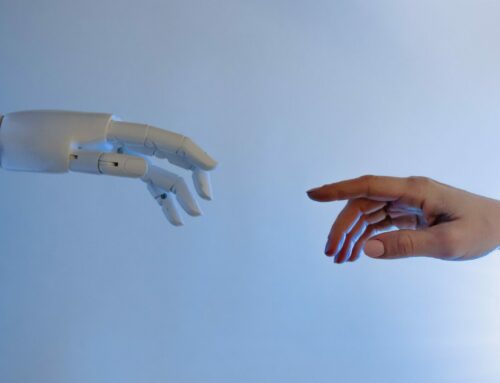The shifting paradigm of higher education
Patrick Blessinger, Shai Reshef and Enakshi Sengupta
St John’s University, New York City, USA, The University of the People, USA, and The American University of Kurdistan
The word paradigm comes from the Greek meaning framework or example. Thus, broadly defined, a paradigm is a related set of concepts and practices (that is, a mode of inquiry together with the related theories, principles, models, taxonomies, methods, rules and assumptions) that define and provide the example of or the framework for a given knowledge domain (science, humanities, art) and discipline and field.
So, from an educational perspective, at the domain level, there is the scientific paradigm, the humanistic paradigm and the artistic paradigm.
Fields are particular areas of study within a discipline, or that cut across several disciplines, and they are usually centred on applied knowledge (for example, professions, careers or occupations). It is typically from fields that communities of practice emerge.
Many disciplines and fields are now multidisciplinary, interdisciplinary and cross-disciplinary. There are varying degrees of overlap between the different domains, disciplines and fields and any analysis should therefore consider the different levels and types of knowledge and their intersections. For instance, the fields of education, medicine, engineering, business and technology cut across several disciplines from the different domains.
Furthermore, each domain has its own epistemological, ontological and axiological focus of study and perspective of the world and each domain makes its own unique contribution to the world. Thus, a paradigm is ultimately a worldview (that is, a mode of inquiry – a particular way of understanding and interacting with the world) that guides the thinking and practices of individuals and groups. As such, the prevailing worldview often reflects the predominant paradigm.
Indeed, many of the problems and issues facing humanity today are so large and complex and global in scope, they require a diverse team of experts that can apply a multi-perspective view that uses knowledge and skills from different domains, disciplines and fields. Many of these concepts have been discussed in some detail in previous University World News articles.
Factors associated with paradigm shifts
A paradigm shift is a radical change in the core concepts and practices of a given domain, discipline or field. Paradigm shifts can occur at any of these levels and may cut across these levels. The field of education, at both the basic and higher education levels, has undergone tremendous change since World War II. This change has been precipitated by unprecedented demand for high quality and meaningful education at all levels across the globe.
The concept of paradigm shift comes mainly from the work of Thomas Kuhn in the context of revolutions in natural science. This concept is now used more broadly to describe fundamental changes that occur in any domain, discipline or field. When a paradigm shift occurs, the worldview that previously dominated the domain is altered or even replaced with a new worldview.
A paradigm shift causes the entire domain to think and act in new ways.
Paradigm shifts may happen relatively quickly (that is, in a revolutionary way) or they may happen relatively slowly (that is, in an evolutionary way) or they may be both revolutionary and evolutionary in that the change occurs over a long period of time but is punctuated by periodic revolutions. The latter phenomenon is perhaps more typical of paradigm shifts, especially if the field is highly diverse in which case the different parts of the domain may not change to the same degree or in the same ways.
Paradigm shifts may be the result of new knowledge being introduced into the domain through new evidence or as a result of new ways of conceptualising or thinking about a problem or as a result of fundamental changes occurring in society (for example, major technological inventions like the printing press in the 15th century or computer technology in the 20th century or major political-economic-social changes like the industrial and democratic revolutions of the 18th century).
Even when the above change factors exist, change may be inhibited due to different reasons like: 1) fixed mindsets that oppose all change, 2) organisational and institutional inertia, 3) autocratic, suppressive and other anti-democratic practices that resist change for the better, and 4) monopolistic, structural and socio-economic barriers to change.
Higher education paradigm shifts
The primary macro forces driving the demand for higher education, include: 1) the globalisation-internationalisation process, 2) political-legal educational reforms, 3) changes in the socio-economic landscape, and 4) technological innovations.
As a result of these macro forces, higher education has experienced the following meso and micro level factors: 1) the emergence of universal access to higher education, 2) the emergence of more effective forms of teaching and learning, and 3) the emergence of a rights-based approach to higher education.
As a result of these forces and factors, three major paradigm shifts have occurred in higher education in recent years:
- The development of lifelong learning as a human right,
- The global democratisation of knowledge, and
- The development of the global knowledge society.
These changes are challenging higher education leaders, faculty and researchers to fundamentally rethink the nature and purpose of higher education and thus, how it should be provided. As a result, some educators now believe that higher education needs to be reconceptualised from a humanistic and human rights perspective.
Equity as the foundation for all education
Barbara Daviet uses the following conceptual model to illustrate this perspective:
Equity > Democratic decision processes > Variety of providers (with the state as guarantor of equity)
Since no one institutional type can possibly meet the educational needs of all students and all segments of society and the economy, it seems clear that a diverse set of institutional types is more suited to addressing those different needs.
Thus, the principles of equity and inclusion serves as the basic foundation for a diversified higher education system to meet 1) the wide-ranging needs of a pluralistic democratic society, 2) the demands of an ever-changing economy, and 3) different individual preferences.
To this end, a growing number of public and non-profit colleges and universities in the United States are attempting to make higher education more affordable for more of their students.
For instance, the State of New York offers tuition-fee-free public higher education for qualifying students. The University of the People provides tuition-fee-free higher education and they are one of the largest providers of higher education to refugees. Students attending the New York University School of Medicine no longer pay tuition.
These examples join a growing chorus of people who now see affordable lifelong education as a moral imperative. While tuition-fee-free higher education may not eliminate all the costs (for instance, living costs and opportunity costs) associated with getting a higher education, it does, nonetheless, put students another step closer to realising their educational and life aspirations.
Patrick Blessinger is an adjunct associate professor of education at St John’s University, New York City, United States, and chief research scientist for the International Higher Education Teaching and Learning Association (HETL). Shai Reshef is president of University of the People. Enakshi Sengupta is dean of the College of Business at the American University of Kurdistan.
Suggested Citation:
Blessinger, P., Reshef, S., and Sengupta. E. (2018). The shifting paradigm of higher education, University World News, http://www.universityworldnews.com/article.php?story=20181003100607371
Or
Blessinger, P., Reshef, S., and Sengupta. E. (2018). The shifting paradigm of higher education, Higher Education Tomorrow, Volume 5, Article 8, https://www.patrickblessinger.com/the-shifting-paradigm-of-higher-education
Copyright © [2018] Patrick Blessinger, Shai Reshef, and Enakshi Sengupta
Disclaimer
Opinions expressed in this article are those of the author, and as such do not necessarily represent the position(s) of other professionals or any institution.




